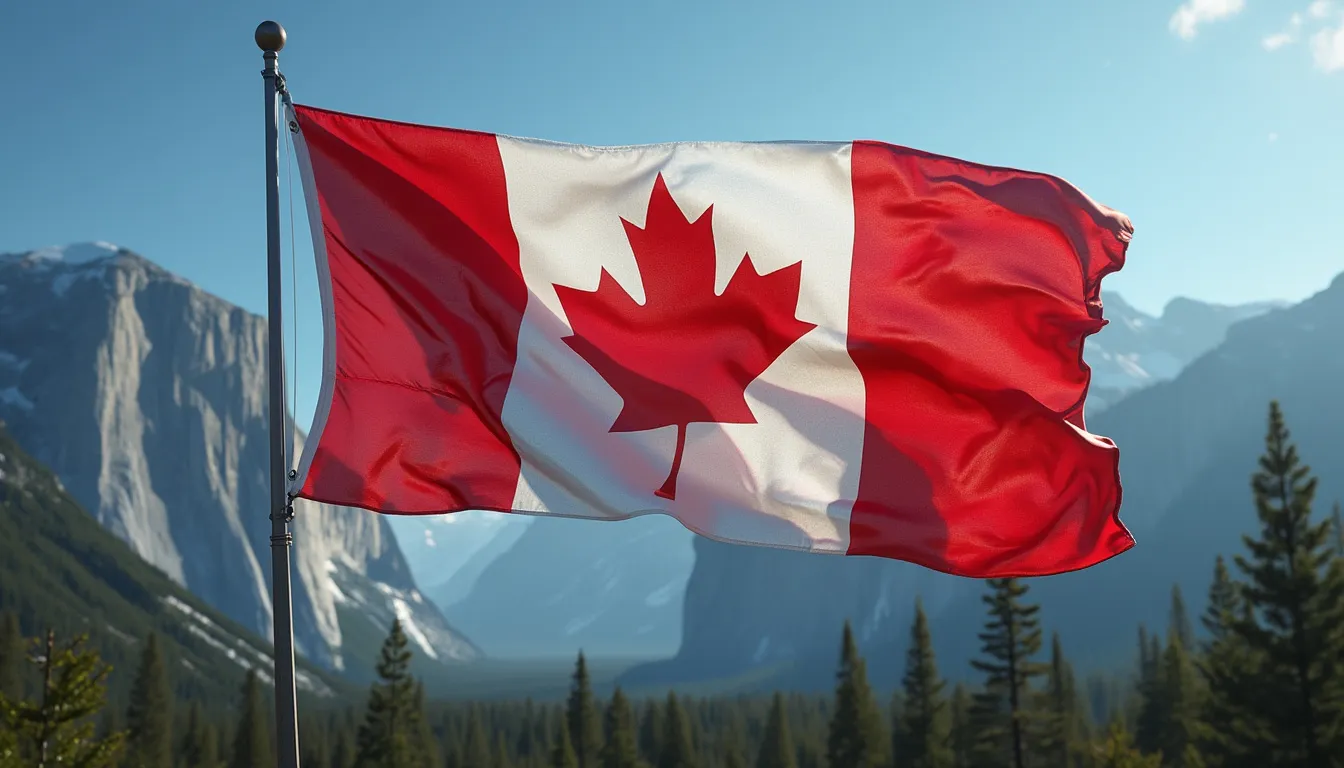The maple leaf had long been a cherished Canadian emblem, but its journey to becoming the central feature of the national flag was far from straightforward. The story of the maple leaf flag is one of cultural significance, political debate, and eventual celebration, reflecting the diverse heritage and values of the Canadian people.
As Canada celebrates the 60th anniversary of its beloved flag, it’s a perfect opportunity to delve into its fascinating history and the enduring symbolism it holds. From its origins in Indigenous traditions to its modern-day recognition as a global icon of democracy, the maple leaf flag is more than just a design—it’s a representation of Canadian unity and pride.
In this article, we’ll explore 10 captivating facts about the maple leaf flag, uncovering its historical roots, the debates that shaped its design, and its lasting impact on Canadian culture and identity. Whether you’re a history enthusiast or simply curious about the story behind this iconic symbol, there’s something here for everyone to appreciate.
The maple leaf has been a part of Canada’s story for centuries, long before it became the centerpiece of the national flag. Indigenous peoples first valued the maple tree for its sap, but over time, the leaf evolved into a powerful symbol of Canadian identity. By the 19th century, it had become a prominent emblem, appearing on military badges, patriotic songs, and even early Canadian currency.
One of the most notable milestones in the maple leaf’s journey came in 1867, when Alexander Muir composed “The Maple Leaf Forever,” a song that celebrated Canadian unity and the leaf’s growing significance. This cultural embrace of the maple leaf laid the groundwork for its eventual adoption as the nation’s official symbol.

The flag’s design is steeped in symbolism. Featuring a red field with a white square at its center, the flag boasts a stylized, 11-pointed red maple leaf. Its proportions are deliberate, with the width twice the height. This design reflects Canada’s rich history, as the maple leaf has been a national emblem since the 18th century, appearing on the coats of arms of Ontario and Quebec in 1868.
February 15th is celebrated as National Flag of Canada Day, commemorating the day the maple leaf flag was first raised in 1965. This day honors the flag’s role as a unifying symbol of Canadian identity and pride.
Canadian veteran Bruce Stock, who witnessed the flag’s first raising, shared a heartfelt reflection on its 60th anniversary. He recalled the moment the flag unfolded on Parliament Hill, describing it as a moment that gave Canada a new identity.
The maple leaf’s influence extends beyond the flag. It has been a cultural icon, adopted by the Toronto Maple Leafs hockey team in 1927 and featured on Canadian coins from 1876 to 1901, remaining on the penny thereafter.
Internationally, the Canadian flag is a recognized symbol of democracy, embraced by Canadians and newcomers alike. It embodies the nation’s values and unity.
The 60th anniversary was celebrated with events like a ceremony at Toronto’s Nathan Phillips Square, featuring a rendition of the national anthem and performances from “Come From Away.” This celebration underscored the flag’s enduring significance as a symbol of Canadian unity and pride.

Conclusion
The Canadian maple leaf flag is more than just a national symbol—it is a testament to the country’s rich history, cultural diversity, and enduring unity. From its origins in Indigenous traditions to its modern-day recognition as a global icon of democracy, the flag’s journey reflects the evolution of Canadian identity. As the nation celebrates the 60th anniversary of its beloved flag, it is a reminder of the values and pride that unite all Canadians. The maple leaf’s enduring presence in art, sports, and culture further cements its place as a cherished emblem of the Great White North.
Frequently Asked Questions
When was the maple leaf flag officially adopted in Canada?
The maple leaf flag was officially adopted on February 15, 1965, after the Great Flag Debate of 1964.
Who designed the Canadian maple leaf flag?
The flag was designed by George Stanley, inspired by the Royal Military College of Canada’s flag, and was selected by a committee formed by Prime Minister Lester B. Pearson.
What do the colors of the Canadian flag represent?
The red and white colors of the flag are deeply symbolic, representing Canada’s history and its connection to the British Commonwealth. The maple leaf itself is a long-standing national emblem.
How is National Flag of Canada Day celebrated?
National Flag of Canada Day, celebrated on February 15th, honors the flag’s adoption with ceremonies, performances, and events across the country.
Is the maple leaf flag recognized internationally?
Yes, the Canadian flag is widely recognized as a symbol of democracy and unity, and it is often embraced by Canadians and newcomers around the world.
Has the maple leaf always been on the Canadian penny?
The maple leaf appeared on Canadian coins from 1876 to 1901 and remained on the penny thereafter, making it a lasting symbol of Canadian identity.





No comment